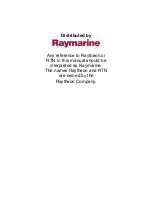
24
Some methods of support removal may cause small pieces of supports to
break away. Beware of flying debris. Wear eye protection and gloves to
protect the skin and eyes.
In addition to removing supports, use sanding, polishing, priming, or painting to improve
presentation, or use other equipment to create molds from printed parts.
5.3
Considerations for specific geometries
For detailed guidance and visual assistance, visit
.
Consider the specific geometry of each part when starting the cycle. Modify the post-cure
process for parts that are large or long, have dense support structures, or have thick or
thin features.
5.3.1
Dense supports
Some parts require denser or thicker support structures. These can inadvertently block light
from reaching some part surfaces during post-curing. The Form Cure L helps ensure even post-
curing by rotating the part during the cycle and exposing the part to light from all directions,
including underneath the turntable. Remove some supports, only as needed, to ensure that
light can easily reach all part surfaces. Leave some supports in place whenever possible to
prevent features from warping during post-curing.
5.3.2
Large or long parts
Most parts should be post-cured before removing support structures to preserve their
shape and prevent warping. While some parts may fit on the turntable more easily without
supports, long or tall prints may require special arrangements to stand on the turntable
without support. Consider the part dimensions when designing the support structures or
planning the post-cure steps.
The Form Cure L turntable has a diameter of 39.5 cm (15.6 in). The curing envelope is
a cylinder the diameter of the turntable and 32 cm (12.6 in) tall. This is the maximum
single part size that can be post-cured in the Form Cure L.
5.3.3
Large or thick parts
Large or thick parts may require a longer post-cure time or higher temperatures because the
part takes longer to heat. Light alone cannot post-cure beyond the surface of the part, which
is one advantage of the Form Cure L heating functionality. When post-curing thick geometries,
warm the part before post-curing and allow extra time for the Form Cure L to preheat to the
target temperature before starting the post-cure lights and timer.
5.3.4
Thin features
Warping during post-curing may occur if a part is especially thin, inadequately supported, or
unevenly exposed to light. The Form Cure L helps prevent warping by rotating the part during
the cure cycle and by exposing the part to light from all directions, including underneath the
turntable. Use support settings or manual editing to design sufficient supports so that thin
features do not warp during post-curing. In the case of a thin, flat, sheet-like object, placing
the part directly on the turntable may offer the best support during post-curing.
CAUTION
NOTICE
Содержание Form Cure L
Страница 1: ...Manual Form Cure L ...
Страница 2: ......
Страница 6: ......
Страница 40: ...Original English instructions November 2021 Formlabs ...















































